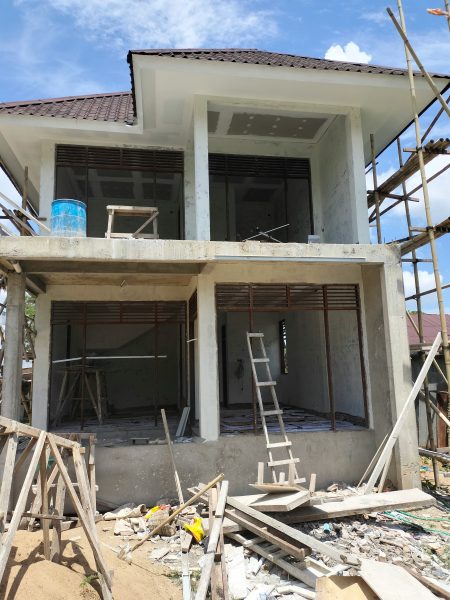
Construction work at your home can rapidly turn curiosity into concern. While new construction brings growth and energy to an area, it’s also conceivable that they can bring challenges for families living along the construction site. Noise, dust, heavy machinery, and shifting horizons have a tendency to affect property as well as the well-being and health of loved ones. Forethought is the way to minimize risk and feel safe when there is construction next door and danger outside.
Understanding the Impact of Construction Next Door
When a new building comes up in the neighboring building, the effect extends beyond simple disturbance. The noise level is very high, especially if work starts early in the morning or continues late into the night. Dust in the air can lead to respiratory problems with difficulty in breathing, particularly for children, the elderly, or individuals with prior respiratory issues. Vibration from machinery could even result in small cracks on walls or affect the garden space.
Understanding what is coming makes families aware of potential issues and implement preventive measures before the disruption sets in. Awareness is the foundation on which resilience is built during a long construction process.
Safeguarding Health Indoors
The home should remain a sanctuary, even when building work is occurring next door. Under-door gaps and around window gaps can be sealed to stop dust from entering. HEPA air purifiers are not only helpful for keeping the air quality indoors good but also comfortable. Having regular cleaning routines set up to hit areas that are dusty, such as window sills, floors, and air vents, is also beneficial.
For children and elderly family members, these precautions may be particularly important. People with fragile health, for example, those who may eventually require aged care, are more severely affected by changes in the environment. By taking extra precautions, they can be safe and comfortable in their own familiar surroundings.
Creating Safe Outdoor Boundaries
Yards, gardens, and driveways may become less secure during the building process, especially when large vehicles and materials are introduced. Families must keep fences and gates well in place and ensure children know which areas are off-limits. Outdoor play spaces can have temporary rearrangements, with activities moved away from dust and noise where possible.
Pets also become annoyed with the constant commotion and movement of nearby work. Locked cages and routine routines help acclimatize to prevent stress and escape attempts caused by sudden interruptions.
Mitigating Noise Interruptions
Noise is likely the most common complaint on construction sites. Hammering, drilling, and machinery often go on for months. While families cannot totally do away with the noises, they can adjust. Double-glazed windows, heavier curtains, and weather-stripping can all serve as protection against noise. White noise machines or calming background music, when played within the house, can dull harsh sounds, making the environment more conducive to study, work, or sleep.
To home workers, talking over concerns of potential noise with employers can offer flexible working hours or part-time working away from home to suit business and personal requirements.
Communication with Neighbors and Contractors
Open communication reduces conflict to a minimum. Homeowners can summon site managers or contractors and ask questions about timetables, estimated durations, or anticipated disruptions. If they are informed when the noisy or dusty stages will occur, then households can prepare themselves, such as reserving day trips or devising indoor quiet activities for hectic workdays.
Their fellow neighbors experiencing the same disturbances can also be assisted through collective support. Exchanging information, common complaining, or even arranging community briefs with the building team can ensure that residents’ issues are resolved.
Preserving Property Value
Construction can devalue a home in the short run, as potential buyers shun the noise and disruption. But when it is finished, the neighborhood often receives better amenities or new housing. To guard long-term value, home owners need to record any harm or building modifications that happen during construction. Pre- and on-site photos of walls, fences, or gardens provide evidence if repairs or damages are needed.
This is also a good point to consider the broader property market and observe how local development can influence long-term investment. Just as parents think about potential around schools, aged care, and transport links when selecting homes, building styles can inform us about how an area will evolve and develop over the long term.
Supporting Emotional Wellbeing
The emotional stress of living in the vicinity of construction is typically overlooked. The constant disruption can have the ability to foster frustration, irritation, and fatigue. Creating daily routines that allow for relaxation, bonding with family, and outdoor excursions helps counter the stress. Regular visits to local parks or community recreation centers can restore tranquility and provide clean, dust-free areas for kids to play.
Families can also gain by explaining the process to younger members. Children who understand why there is pounding and noise outside their window are less concerned about it. Presenting construction as a temporary phase can inspire patience and perseverance.
Knowing Your Rights and Responsibilities
Every building job has regulations, from operating hours, health and safety, and pollution law. Neighbors who feel their health is at risk must become acquainted with council policy. As a last resort, complaints in writing may be lodged to compel contractors to play by the rules.
Home building projects, such as widening roads or civil construction, often require stricter requirements on communication and safety. Information regarding these regulations allows families to respond when situations approach unacceptable levels.
Long-Term Planning
While initial concern is often daily disruption, ahead lies possibility. A new building and construction next door might unlock enhanced amenities, better roads, or public spaces. Families can start envisioning how these amenities will enhance their lives when the disruption and grime diminish. Strategy with both short-term protection and long-term vision preserves perspective in the most difficult phases.